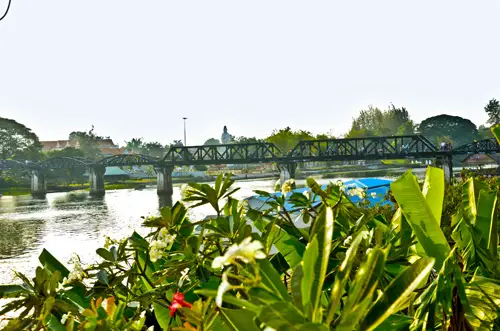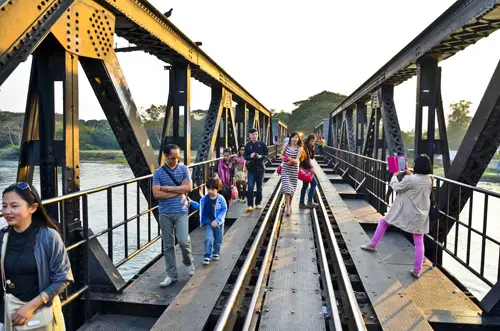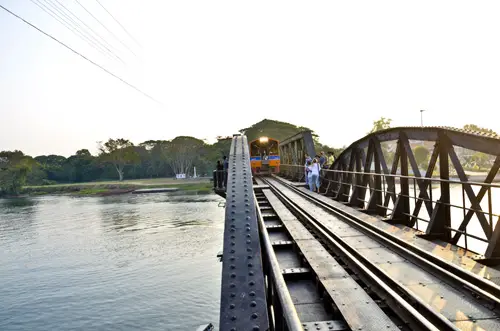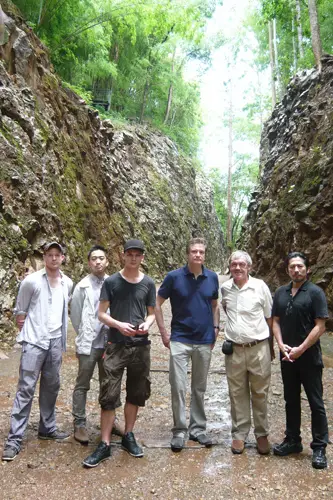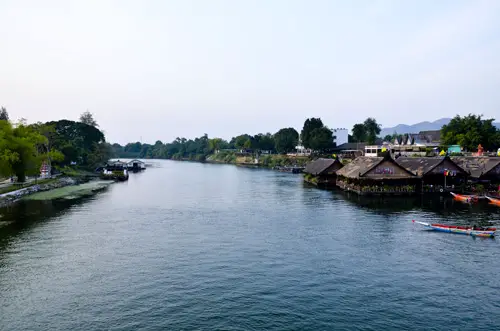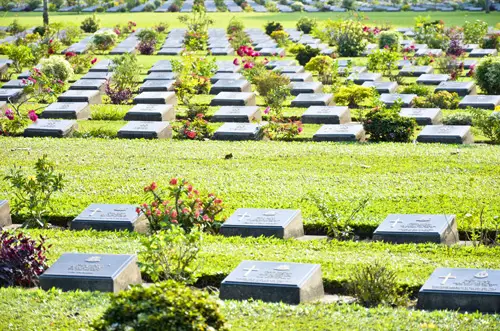With the recent political and social changes that are taking place in Myanmar, the interest in Burma, the name under which Myanmar is still referred to by many foreign media outlets, has grown tremendously. The European Union Council on Tourism and Trade has even awarded Myanmar the ‘World’s Best Tourist Destination for 2014’ so it’s not surprising that more and more travelers are trying to get into the country before mass tourism spoils the thrill of literally exploring the unbeaten track.
The increase in tourism has also spiked up the interest in Myanmar’s history, especially in relation to Thailand and the Japanese presence in the region during the Second World War. The Railway Man, a British-Australian war film released in 2013, details the hardships that the POWs (Prisoners of War) went through while labouring on the Thai-Burma Railway under the unforgiving eye of the occupying Japanese army. While the film offers a good cinematographic experience of what it was like to be in a POW camp and Colin Firth and Nicole Kidman do a respectable job in portraying the main characters’ physical and psychological drama, how about making a day trip to the place where the action actually took place?
Located in Kanchanaburi province, at about 130km east of Bangkok, the Thailand-Burma Railway Centre, or TBRC for short, is an interactive museum and research facility which has a mission to faithfully present the history of the Thailand-Burma Railway. In 1943, using the Allied Force’s prisoners and forced Asian labourers, the Imperial Japanese Army managed to build a 415-kilometre railway line which, even today, is still known as the Death Railway. Connecting Ban Pong in Thailand to Thanbuyuzayat in Burma (through the Three Pagoda Pass), the railway was used by the Japanese to transport supplies and troops for its advancing armies.
Tens of thousands of POWs and labourers died while accomplishing this project and TBRC intends to “offer the visitor an educational and moving experience” so that those who perished are not forgotten and the madness of waging wars is put into light. One of the Centre’s research assistants who strives to do just that is Andrew Philip Snow, a 59-year-old Australian who has been living in Thailand for the past five years. He has been conducting research at the museum in Kanchanaburi.
TBRC has been operating for eleven years and, most recently, it has organized extensive tours for European visitors which even included ex-POWs who came to Thailand in 2013 for a railway pilgrimage and memorial service. The Centre is rather well-known for organizing excellent personal pilgrimages for relatives of the prisoners of war. “TBRC is a privately funded operation depending entirely on support by its visitors and ex-railway POWs and their relatives and friends from around the world in order to meet its operational costs,” Andrew explained.
One member who brought a considerable contribution to the organization is another Australian national, Rod Beattie, the museum’s curator. On June 15, 2013, he was awarded an MBE Order of Chivalry in the UK Queen’s Birthday Honours List for his services to the Commonwealth War graves and the history of the Thailand-Burma Railway.
The centre is also upholding some responsibility to the local community and often undertakes educational projects. “We work with local Thai schools and international schools to disseminate information on the Thailand-Burma Railway and help to create a new generation of citizens who better understand their local history and can place it in a wider international context,” Andrew stated.
The Thailand-Burma Railway Centre prides itself in the fact that it presents factual and non-partisan information. Using state-of-the art display techniques, the eight main galleries that make up the TBRC are a treasure trove and an eye-opener for anyone visiting the museum, regardless if they have a deep interest in the subject matter or they are just passers-by.
The first gallery displays a timeline of the Japanese invasion of Southeast Asia and the route taken by the prisoners of war when being transported from Singapore and Malaysia into Thailand to work on the railway. The second gallery details the planning, construction and logistics used by the Japanese engineers. Among the displays you can also find actual relics of tools that were used in the construction process.
A nine-metre long scale contour model of the railway is the centerpiece of the third gallery which concentrates on the geography of the area where the railways cut through the mountains. The poor living conditions that the POWs and labourers were forced to suffer are shown in the fourth gallery alongside a display of a few personal effects that belonged to the prisoners.
The fifth gallery is a hospital hut mock-up. It contains two panels that describe the resourcefulness and dedication of the camp doctors and their assistants who did everything humanly possible to look after the men under their care. A summary of the deaths caused by the construction of the railway is shown in the sixth gallery and the staggering numbers are highlighted by a histogram made up of railway spikes: around 90,000 Asian labourers and 12,399 Allied Forces POWs died while building the railway.
Both the seventh and eighth galleries give details of how the Japanese used the railway, their subsequent defeat by the Allies, the liberation of the prisoners, the recovery of the bodies left to rot in the tropical forest, and the establishment of the twin cemeteries in Thailand and Burma, at Kanchanaburi and Thanbyuzayat.
Known in Thai as “Pa-cha Angrit,” the Thailand-Burma Railway Centre is located near the Kanchanaburi War Cemetery on Sanggchuto Road, only one kilometre from the city centre. The museum receives approximately 80,000 visitors a year and it is open every day (except on official Thai holidays) from 9am to 5pm. Tickets cost 120 baht for adults and 60 baht for children but schools can receive special rates for large group visits. To find out more information about their Railway Pilgrimages program and their research work, visit their website or contact them at admin[at]tbrconlne[dot]com.
Photography by Jojit Pangilinan
